Login security is crucial in Azure Active Directory (AD) as it serves as the foundation for safeguarding organizational data and resources. The increasing frequency of cyberattacks underscores the need for strong security measures. A compromised account can lead to unauthorized access, data breaches, and significant financial loss. Implementing effective login security practices helps organizations protect themselves from such risks. Additionally, IT support outsourcing can play a vital role in enhancing security by providing specialized expertise to ensure these measures are consistently maintained and optimized.
Effective login security not only protects sensitive information but also maintains compliance with regulatory requirements. Proper measures contribute to building trust with clients and partners, demonstrating a commitment to safeguarding their data.
Overview of 5 Common Security Threats
Understanding the security threats associated with Azure AD is essential for organizations aiming to enhance their login security. Below is a table that outlines common security threats faced by Azure AD users.
| Threat Type | Description | Potential Impact |
| Phishing Attacks | Fraudulent attempts to obtain sensitive information often via email or fake websites. | Account compromise and data breaches. |
| Credential Stuffing | Automated attacks using stolen credentials to access accounts across multiple platforms. | Unauthorized account access and data theft. |
| Man-in-the-Middle Attacks | Intercepting communication between a user and the server. | Data interception and unauthorized actions. |
| Brute Force Attacks | Automated attempts to guess passwords using various combinations. | Account lockout and unauthorized access. |
| Insider Threats | Employees or contractors misusing their access for malicious purposes. | Data loss or damage to organizational reputation. |
Being aware of these threats, organizations can implement the necessary protections to bolster Azure AD login security. Emphasizing the importance of security planning protects sensitive information and supports overall business integrity.
Strong Password Policies
Implementing strong password policies is a fundamental step in enhancing Azure AD login security. Establishing guidelines for password complexity and enforcing regular password changes can significantly reduce the risk of unauthorized access.
Implementing Password Complexity Requirements
Password complexity is critical in preventing easy-to-guess passwords. Establishing guidelines for what constitutes a strong password can help users create secure credentials. The following are common requirements that can be enforced:
| Complexity Requirement | Description |
| Minimum Length | Passwords should have a minimum length of 8 to 12 characters. |
| Uppercase Letters | At least one uppercase letter (A-Z). |
| Lowercase Letters | At least one lowercase letter (a-z). |
| Numbers | At least one numeric digit (0-9). |
| Special Characters | At least one special character (e.g., @, #, $, etc.). |
Enforcing these requirements helps ensure that users create passwords that are difficult to guess or crack.
Enforcing Regular Password Changes
Regular password changes are essential for maintaining account security. Users should be required to update their passwords periodically. This practice helps mitigate the impact of any potential security breaches.
A recommended password change schedule is as follows:
| Change Frequency | Recommendation |
| Every 30 Days | High-security environments, such as those dealing with sensitive data. |
| Every 60 Days | Moderate-security environments. |
| Every 90 Days | Lower-risk environments, but still advisable for best practices. |
Adhering to these guidelines, organizations can strengthen their Azure AD login security and reduce the likelihood of unauthorized access to sensitive information.
Multi-Factor Authentication (MFA)
Implementing multi-factor authentication (MFA) is a vital step in enhancing the security framework of Azure Active Directory (Azure AD). MFA adds an additional layer of protection by requiring users to provide two or more verification factors when logging in.

Understanding the 4 Benefits of MFA
MFA significantly reduces the risk of unauthorized access to accounts. Requiring several types of identification ensures that, even if a password is breached, an attacker would still need other details to access the system.
| Benefit | Description |
| Enhanced Security | Reduces the likelihood of unauthorized access by requiring multiple factors. |
| Protection Against Phishing | Even if credentials are stolen, multiple factors prevent access. |
| Compliance | Helps meet regulatory requirements for data protection. |
| User Confidence | Users feel safer knowing their accounts are better protected. |
Setting Up MFA in Azure AD
Setting up multi-factor authentication in Azure AD involves a few straightforward steps. Organizations can enhance their login security by enabling and configuring MFA for their users.
| Step | Description |
| 1. Access Azure Portal | Log into the Azure portal using an administrator account. |
| 2. Navigate to Azure AD | Select "Azure Active Directory" from the left-hand navigation pane. |
| 3. Select Users | Choose "Users" to manage user settings and preferences. |
| 4. Enable MFA | Click on "Multi-Factor Authentication" settings and enable it for desired users. |
| 5. Configure Methods | Select verification methods, such as phone, email, or mobile app notifications. |
| 6. Notify Users | Inform users about the MFA requirement and guide them through the setup process. |
Following these steps, SMEs can effectively implement MFA in Azure AD, enhancing their overall login security while protecting sensitive information.
User Permissions and Role-Based Access Control (RBAC)
Managing user permissions effectively is vital for enhancing security in Azure Active Directory (AD). By restricting access to sensitive information and resources, organizations can significantly reduce the risk of unauthorized access and data breaches.
Limiting User Permissions
Setting boundaries on user permissions is essential for maintaining a secure environment. Granting users only the necessary permissions for their functions limits potential vulnerabilities. This practice involves regularly reviewing and adjusting user access levels to ensure they align with current job roles.
An overview of common permission levels might look like this:
| Permission Level | Description |
| Read-Only | Users can view information but cannot make changes. |
| Contributor | Users can modify existing information but cannot delete it. |
| Owner | Users have full control, including the ability to delete and manage permissions. |
Clearly defining permissions, organizations can ensure that employees only have access to the resources needed for their job, minimizing the risk of data leaks or misuse.
Implementing RBAC for Better Security
Role-Based Access Control (RBAC) enhances access management by assigning permissions based on user roles within the organization. This approach simplifies the administration of user rights and ensures that permissions are consistent across similar roles.
The steps to implement RBAC include:
- Identifying Roles: Determine the roles within the organization, such as Administrator, User, and Guest.
- Assigning Permissions to Roles: Allocate necessary permissions for each role based on their function.
- Mapping Users to Roles: Assign users to the predefined roles to streamline their access rights.
To help visualize this process, here's an example of roles and associated permissions:
| Role | Permissions |
| Administrator | Full access to all resources and permissions |
| User | Access to specific applications and data only |
| Guest | Limited access to view-only resources |
Employing RBAC and limiting user permissions, organizations can bolster their security posture and safeguard sensitive information against unauthorized access. This proactive strategy is crucial for any organization seeking to implement robust Azure AD login security practices.
Monitoring and Alerts
Effective monitoring and timely alerts are essential components of Azure AD login security. These practices can substantially reduce response times to potential security breaches and enhance overall protection.
Setting Up Security Alerts
Organizations should implement security alerts to stay informed about potentially suspicious activities in their Azure AD environments. By configuring alerts, IT teams can proactively respond to unusual login attempts, unauthorized access, or other security events.
Common types of alerts should include:
| Alert Type | Description | Recommended Action |
| Unusual Login Location | Alerts triggered by logins from unexpected geographic locations. | Investigate the login attempt. Validate user identity. |
| Multiple Failed Login Attempts | Alerts for several failed attempts, indicating potential brute-force attacks. | Lock the account after a set number of failures. Enable user verification. |
| New Device Login | Alerts generated when a user logs in from a device not previously associated with their account. | Confirm device legitimacy. Consider enabling MFA for the user. |
| Admin Role Changes | Alerts for any changes made to administrative roles. | Review changes to ensure they were authorized. |
Setting up these alerts allows organizations to quickly react to security threats and maintain their Azure AD integrity.
Regularly Monitoring Login Activities
Monitoring login activities is crucial for identifying potential security issues. Organizations should regularly review login logs to assess user behavior and pinpoint any irregularities.
Key metrics to monitor include:
| Metric | Description | Optimal Value |
| Successful Logins | The number of authenticated login attempts per day or week. | Compare to historical data for spikes. |
| Failed Logins | Tracking of failed authentication attempts over a specific period. | Set thresholds for alerting. |
| Login Locations | Geographic distribution of login attempts. | Assess legitimacy based on user profiles. |
| Login Times | Patterns in login times relative to user expectations. | Identify unusual patterns or out-of-hours access. |
Establishing a regular review process for login activities helps to detect any suspicious behavior early. By utilizing the combination of security alerts and continuous monitoring, SMEs can enhance their Azure AD login security effectively.

Regular Security Updates and Training
Regular security updates and training are vital components of a robust Azure Active Directory (AD) login security strategy. Staying informed and proactive in these areas can help protect sensitive information and systems from potential threats.
Importance of Software Updates
Software updates play a significant role in maintaining security. These updates often contain patches for vulnerabilities that could be exploited by malicious actors. Neglecting to apply these updates may leave an organization exposed to security risks.
Keeping software up-to-date ensures that businesses have the latest security measures in place. It reduces the risk of breaches and builds a fortification against emerging threats.
Providing Security Awareness Training for Users
User training is essential for fostering a culture of security within an organization. Educating employees about the latest security threats and safe practices can significantly mitigate risks.
To further strengthen your cybersecurity defenses, it’s important to understand the capabilities and limitations of built-in tools like Windows Defender. Our article, “Is Windows Defender Really Strong Enough to Stop Viruses?” takes a close look at how effective Windows Defender is in protecting your systems against threats.
LK Tech: Technology That Moves with You
Implementing regular security awareness training ensures that all staff members stay informed and vigilant about potential security threats. This proactive approach not only protects individual accounts but also strengthens the overall security posture of your organization. At LK Tech, we specialize in offering top-notch IT support tailored to your unique needs, helping you implement the best security practices.
If you're looking for a reliable IT company in Cincinnati to bolster your security measures, don’t hesitate to contact us today to learn how we can assist you.


